Search Results for 'Industrial School'
10 results found.
Cobblers and shoemakers
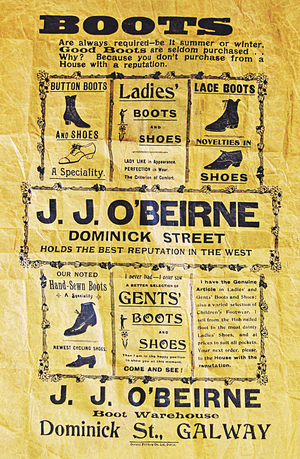
The 1651 map of Galway shows a Shoemaker’s Tower located in what is the Eyre Square Shopping Centre today. Shoemaker’s Lane, or Bóithrín na Sudairí, the road of the shoemakers or the tanners, was where Buttermilk Walk is today. Shoemaking was always an important business but the individual shoemaker is a rare breed now, instead you associate the craft with factories like Dubarry in Ballinasloe.
Remembering Peter Tyrrell
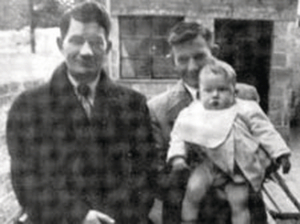
On April 26 1967 the body of a man was found on Hampstead Heath. It was charred and burnt beyond recognition. Initial investigation found that the man had deliberately set fire to himself. Who was this man?
Author Brian Martin on his new play for Druid
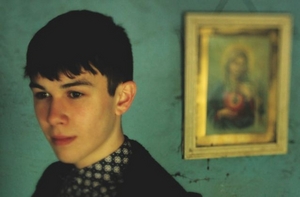
DRUID THEATRE Company’s main contribution to this year’s Galway International Arts Festival is Be Infants In Evil, the professional debut of Dublin-born playwright Brian Martin.
The Claddagh National School

An advertisement in the Irish Independent in July 1931 invited tenders from competent builders for the erection and completion of the proposed new St Nicholas’ National School in the Claddagh. When the new school was built it was described as “An attractive rectangular building with a red tile roof made by the Galway Brick and Tile Company”. The outdoor toilets were at the end of the playground.
Mick Donnellan - brewing up a storm with El Niño
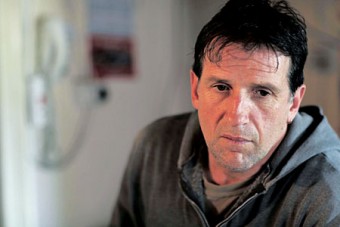
BALLINROBE NATIVE Mick Donnellan must surely be one of the busiest writers based in Galway. Over the past year he has staged three of his plays at the Town Hall - Sunday Morning Coming Down, Shortcut to Hallelujah, and Gun Metal Grey, all of which were enthusiastically received.
One hundred years of cinema in Galway
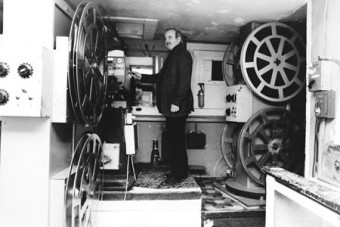
The earliest reference to ‘moving pictures’ in Galway that I have come across dates from 1909, when The Enterprise Animated Picture Company came to the Court Theatre in Middle Street with its cinematography performances and variety entertainments. “Rarely has such an opportunity been given to the people of Galway of viewing in animated pictures the most sensational events of real life and drama. Those from real life included Boxing Champions and Logging in Sweden, while other titles included Nocturnal Thieves, A Constable Please, The Pony Express, and Fairy Presents. The pictures come in ever-changing variety and there are no exasperating delays.” The Court Theatre had 500 seats and was also known as The Racquet Court.
The Galway sessions
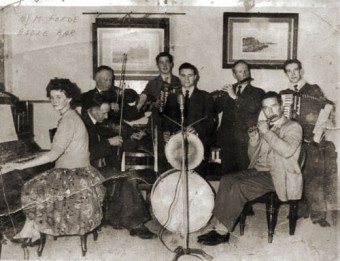
Comhaltas Ceoltóirí Eireann in Galway was formed in the mid-fifties by schools inspector Pádraic Ó h-Eidhin and by Dr Galligan. Groups of musicians began to meet in St Patrick’s School, the Industrial School, and Mattie Forde’s Eagle Bar on the corner of Henry Street and William Street West. This represented the first stirrings of general interest in Irish traditional music in the city.
Child sex abuse was chronic in Galway institution, report reveals
A report published yesterday after a ten year delay by the Child Abuse Commission highlighted that sexual abuse was ‘chronic’ in the Christian Brothers’ industrial school at Letterfrack.
Sexual abuse of children was rife in Kilkenny institutions, report reveals
A damning report released on Tuesday by the Child Abuse Commission highlighted two Kilkenny institutions where it said sexual abuse of, and violence against children was rife.
Guth na n-Óg town league

Guth na n-Óg was originally set up as a youth club in the late 1940s. Some of those involved in its setting up were Páid McNamara, Fr Fitzgibbon SJ, Tom Walsh (who worked in O’Gorman’s), Seán Kirby, Paddy Gleeson from William Street, and Ivor Kenny. Initially they used to meet in the Arus in Dominick Street but they fell foul of the authorities there because they did not speak Irish all the time, so they moved to the British Legion building on Father Griffin Road (Where Yeats College was until recently). Each member got a membership card and a badge. They used to play indoor games and have music sessions, and eventually they formed a céilí band and held a céilí every Saturday evening. They also formed a marching pipe band which thrived for a number of years.

